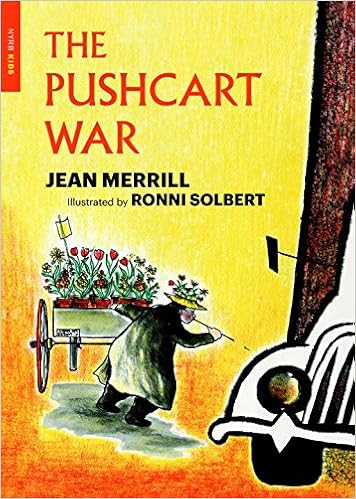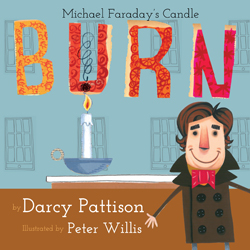Now I really must apologize, a PhD deadline, for submitting my
first chapter, rather took precedence over the Blog for a few weeks but it is
Monday morning, it is my birthday tomorrow and I always like to start the new
birthday year with a new challenge, this one is going to be to keep the Blog
updated by writing a new one each and every Monday ... if I have not posted by
1pm you must email/Facebook/Tweet me and remind me to do it ...
So for week 1 of the new mission a blog written by reviewer and
all round fantastic book reader Bridget Carrington with plenty on offer to get your teeth into ...
Something old and
something new came through my letterbox in February. The old comes in welcome
reissues by the New York Review of Books of two classics: James Thurber’s splendid
fairy-tale from 1950, The
13 Clocks, with its original illustrations by Marc Simont, and from 1964,
The Pushcart War by another American author, Jean Merrill, with its original
illustrations by Ronni Salbert.
Thurber’s is a wonderful story, well-known beyond its country of origin, while
Merrill’s less familiar work, reset in the future, time having caught up with
the 1964 original, provides an amusing but cutting commentary on the often
ridiculous origins of war. While there may be other editions out there, the
NYRB specializes in faithful reproductions of classic twentieth-century
children’s texts together with the illustrations which went with them in their
original form, something that’s often missing from later re-publications. The
NYRB is an occasional series which has returned to us several otherwise hard to
come by titles, mainly American, but notable also for British authors such as
Eleanor Farjeon, Leon Garfield, E. Nesbit and (to my great pleasure) Barbara
Sleigh’s delightful Carbonel stories.
The new includes
two picture books and two Australian YA/New Adult novels. I’m not quite sure
what distinguishes a New Adult novel from a YA novel. One definition classes it
as YA with added sex and swearing, but this clearly ignores many noteworthy and
award-winning YA novels written in the last fifty years. Equally, as she
doesn’t include sex and swearing, should we count Jane Austen as an
up-and-coming writer of Young Adult rather than New Adult material? If it’s only
that the protagonists are older, but the subject matter remains coming-of-age
related angst/relationships/romance it seems a false distinction. Perhaps this
just shows how unhelpful it is for publishers to pigeonhole books into
categories based on age…
Australian author Laura Buzo’s second novel Holier than Thou (Allen and Unwin) is classified as New Adult, and
her main protagonist is twenty-four, a graduate in her first job as a mental
health social worker. There is sex and there is swearing, but there’s an awful
lot more to this deeply thoughtful narrative. Holly tells her own story,
starting with a crisis at work, but then ranging to and fro through her high
school and university life to examine her relationships with her parents, her
sibling, her friends and her boyfriends. In an interview Buzo herself describes
the novel as being ‘about the trajectory of grief, and of friendship,
family, loss, loyalty, work and the nuts and bolts of morphing into adulthood.’
She adds, ‘It is sad and I don’t pull punches, but I never forget to bring the
funny as well.’ All this is true, and Buzo makes an excellent job of it,
particularly in examining Holly’s reaction to her father’s death, and her
search for a man whose intellectual as well as physical charms would make a
suitable permanent relationship. Has she made the right decisions by the end of
the novel? If Buzo gives us a sequel, we might find out, but otherwise it ends
as real life so often does – in resigned uncertainty.
Michael Adams’ YA novel The
Last Girl (Allen and
Unwin) envisages a post-apocalyptic Australia in which almost the entire
population is suddenly affected by The Snap, whereby they can all hear what
everyone else is thinking, and which results in a considerable amount of
violence and a great number of deaths. Following this the majority of the
remaining citizens enter a catatonic state, apart from a few who have a
physical anomaly which appears to shield them. Sixteen-year-old Danby is one of
those, and after the Snap-related deaths of her father and step-mother we
follow her attempts to help her learning disabled younger step-brother, and to
reach her vulnerable real mother’s remote home. Along the way we see
convincingly portrayed scenes of mass hysteria, devastation and horror, and are
introduced to Nathan and Jack, to both of whom Danby is attracted. There are
complex and interesting moral dilemmas raised, particularly when it comes to
choices over resuscitation of the catatonic, and we are promised even greater
decisions to be made in the two following novels, The Last Shot and The Last Post.
In Time Travelling Toby and the
Battle of Britain written
by Graham Jones and illustrated by Neil Parkinson (GroBags) we have the curious
combination of a cheery comic style, featuring the eponymous hero and his
brothers being taken by his time-travelling sports car to the Battle of
Britain, with a rhyming text which seems at variance with the serious nature –
bombing and death – of the setting. Parkinson’s illustrations are bright and
attractive, but would be better employed in more appropriate texts. Further
volumes are planned, Apollo
Moon Landing and Battle of Trafalgar and there is a website: http://timetravellingtoby.com/
Far more interesting is Burn:
Michael Faraday’s Candle written
by Darcy Pattison and engagingly illustrated by Peter Willis (Mims House),
which is adapted from Faraday’s own Royal Institution Christmas Lectures,
turning his 1848 six-part scientific series on The Chemical History of a Candle into a text which younger readers
could understand. Faraday himself published the full lectures as a book in
1861, and advocated that several of the experiments could be undertaken by
children at home, so Pattison and Willis are following in a noble tradition of
engaging children with practical science. Pattison accurately puts the subject
in context, with a brief explanation of what the RI Christmas Lectures were and
who attended, followed by Faraday’s own words explaining how a candle burns,
and followed by detailed information about Faraday, the Lectures, and an
explanation of the terms and ingredients. The text is varied in type, size,
colour and style on the page, while the illustrations are placed in a
nineteenth-century world, bright, inviting, amusing and accurate, providing a
lively visual interpretation of both historical and scientific matter. As I
would unreservedly recommend it for every primary school book shelf, it would
be helpful to relate the concepts to UK curriculum stages, as they have with
the US NGSS, but other than this, this is an excellent book, which should
engage and entertain young people as the Christmas Lectures themselves continue
to do into the twenty-first century.





No comments:
Post a Comment